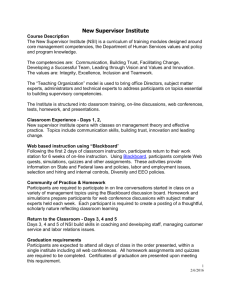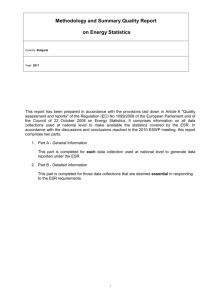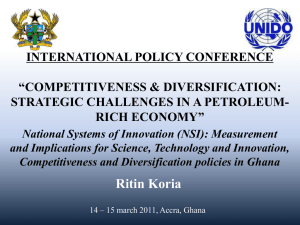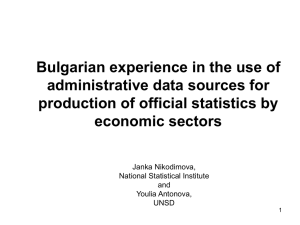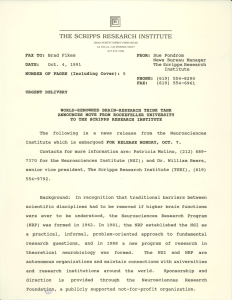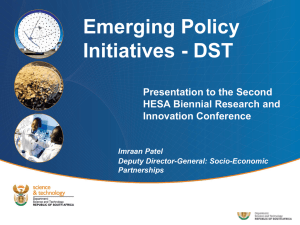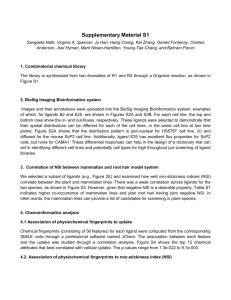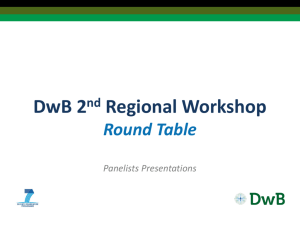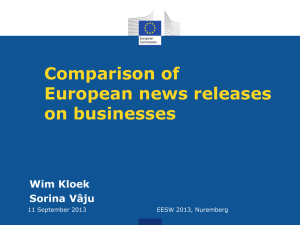NSI landscape: Policy - Global Forum on Innovation and Technology
advertisement
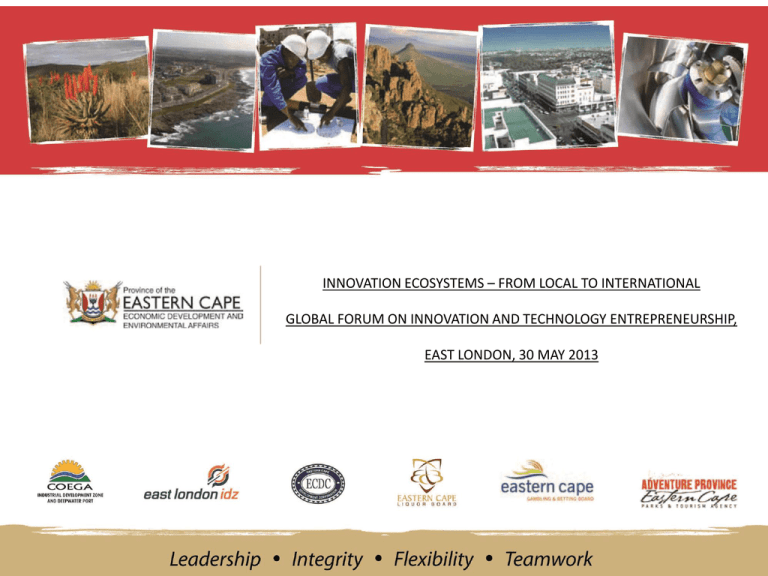
INNOVATION ECOSYSTEMS – FROM LOCAL TO INTERNATIONAL GLOBAL FORUM ON INNOVATION AND TECHNOLOGY ENTREPRENEURSHIP, EAST LONDON, 30 MAY 2013 Outline 1. 2. 3. 4. 5. Introduction and Background National Innovation System Provincial Innovation Strategy Ongoing Activities for Technology Transfer Conclusion Introduction and Background • SA a developing country with various innovation instruments and infrastructure • Apartheid isolation – creativity and self reliance • Technological and research capacity e.g. nuclear science, military, biochemicals • South African NSI landscape • DST Ten Year Innovation Plan (TYIP) – 2008-2018 • Research, Development and Innovation Strategy • Provincial R,D&I initiatives • National Priorities • Economic growth and competitiveness • Contributing to Africa’s development – supporting the NEPAD/AU • Dealing with challenges of inequality, poverty and unemployment NSI landscape: Policy NSI SWOT Benchmarked New public S&T missions Biotechnology ICT Advanced manufacturing Astronomy Developing the NSI Creation of DST 2002 10Yr Innovation Plan Knowledge-based economy Grand challenges Human capital development R&D Strategy S&T missions S&T White Paper 1996 OECD Review of SA NSI 2004 2007 Introduction and Background 1. Transformation towards a knowledge-based economy – Knowledge as the basic form of capital – Innovation as the product of knowledge generation, accumulation and exploitation 2. “High-end” human capital (i.e. the PhD) as one of the key drivers for innovation 3. Institutional and policy enablers to encourage, support and commercialize local knowledge and innovation Towards a Knowledge Economy RESOURCE-BASED ECONOMY KNOWLEDGE-BASED ECONOMY Grand Challenges – our agenda • Innovation Grand Challenges 1. 2. 3. 4. 5. “Farmer to Pharma” (value chain to strengthen the bio-economy); Space S&T (including ICT) e.g. the Square Kilometer Array (SKA project) Energy Security – green, nuclear, wind, etc. Global Change (incl. climate change) Human and Social Dynamics (innovation for social development) NSI Vision Multi-dimensional innovation system International & regional Innovation Systems Sectoral Innovation System B National Innovation System Sectoral Innovation System A Regional Innovation System Local / Regional Sectoral Innovation System C Our PSI Provincial Innovation Value Proposition The main role of innovation in the province in the next five years would be three fold as follows: 1. Step 1: Mobilization of Innovation Inputs o o o 2. Step 2: Management of the Innovation Process o o o o 3. Profiling and branding the innovation initiative and solutions Establishment of a database of innovators and inventors in the province and provide a platform for collaboration and networking Setting up requisite governance arrangements, capacity, technology, infrastructure, and knowledge systems Assessing the state of research output and product development by the various innovation players Fostering collaborative arrangements among innovation players within the province and beyond Setting up of knowledge/research protection and commercialization arrangements Identification of critical innovation issues/challenges and sourcing research and funding of innovation solutions to these Step 3: Fostering of Innovation Outputs o o o o o o Mobilization of funding partnerships, pooling and focusing of current resources available Marketing of innovation products Collaboration with other entities and structures for incubation, enterprise development, research prototyping, etc. Innovation education and advocacy to create innovators and entrepreneurs Focus on policy and process innovation to unlock developmental potential Focus on innovation enterprises development, skills building and retention Ongoing Activities for Technology Transfer Electrical machinery, apparatus & equipment Sustainable Agriculture and Agro-processing Bio-Fuels / Renewable Energy Aquaculture & Fisheries Chemicals / Pharmaceuticals: Botanical and Medicinal (medicinal plants, essential oils, aloe ferox) Food products (local production) Timber & wood-products, Furniture Niche Textiles – Natural fibres: Wool & Mohair, leather Transport Equipment Electric cars Medical appliances Wind turbines Automobiles, boats, motorcycles Metals & Minerals (electrolytic manganese dioxide) Electronics Audio/visual robotics Ongoing Activities for Technology Transfer Business Needs Technology Applications (business model) Electronics/Software Electronic control systems – industrial processes Electronic / Operator Skills Product Development Niche markets/products New applications New materials Ongoing Activities for Technology Transfer Product Development Applications for new technologies Production process Niche products Sectors: Textiles, food processing, electrical machinery, etc. Skills Development Electronics Electrical equipment Information technologies (eSkills) Sectors: all Ongoing Activities for Technology Transfer • • • • • • Two Industrial Development Zones Two Science and Technology Parks Research entities – CSIR, ARC, MRC, etc SKA Research Chair Nano Technology Platinum beneficiation, marine research, shale gas, nuclear science, ICT and others – Multi-helix collaboration – Regional Innovation Forums – Social Innovation platforms Conclusion • Exciting period of setting up our innovation instruments, systems and partnerships – Participation in innovation platforms and forums nationally and internationally e.g. IASP – After conference legacy ICT projects – Continental research on fibres under Commonwealth – Collaboration with EU on Renewables and Green technologies Thanks for the Opportunity
